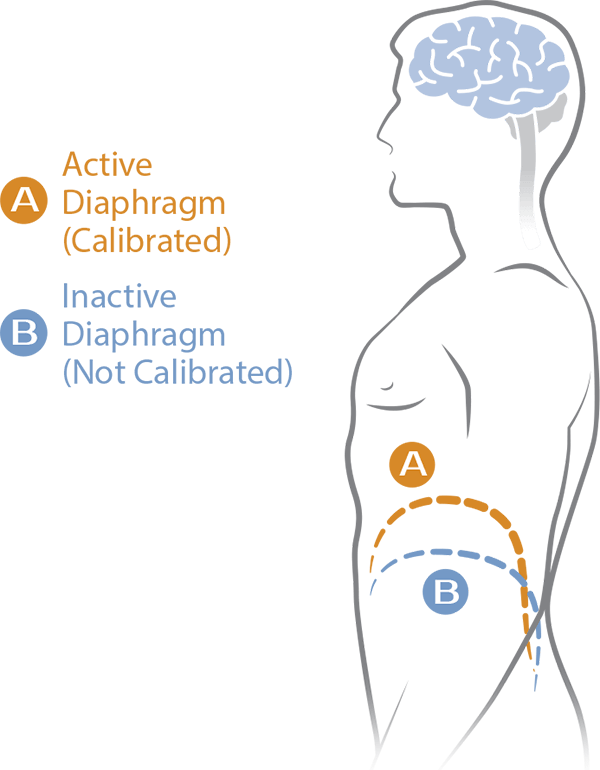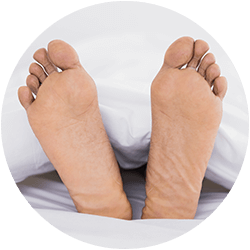Kinetic Sequencing & Calibration
Defining The Total Relief Method™ Kinetic Sequencing Is the Key to Calibrating Your Brain and Body.
At present, there are 352 precise bio-mechanical motions that make up the Kinetic Sequencing process. Each one of these motions causes your brain to enter into a hyper learning state — just like when you are learning anything new. If you are in chronic pain, then your brain has created a pattern for that pain and it most likely learned that pattern from a traumatic event. Kinetic Sequencing creates new patterns in the brain and the body responds to these new patterns instantly.

Breathing with Your Diaphragm Can Reduce Your Pain by 50%
You can go about one month without food, a week without water but only seconds without air. The diaphragm is the main breathing muscle and your Calibrationist will guide you through this most important of all Calibrations. Why is it so important? Because the diaphragm produces about 70% of your breathing capacity and 99% of the population has dysfunctional breathing muscle patterns. This is a primary source of physical pain and emotional stress because the brain being starved for oxygen goes into a state of mild, moderate or severe anxiety or stress. Most of us do a lot of sitting which affects us in two ways in relation to breathing. First, the diaphragm is compressed in the normal sitting position and in this way is discouraged to be active while breathing. Second, this leaves the “Secondary Breathing Muscles”, located in the base of the neck to perform the breathing function. These muscles are able to produce 30% of breathing power. This will cause the secondary breathers to over work and strain to lift the rib cage and chest to inflate the lungs. This improper breathing pattern is known as “Chest Breathing” and is associated with neck and head pain.
However, with chest breathing only the upper half of the lungs will inflate with air (oxygen). The majority of the air-breathing capability of the lungs is contained in the bottom half of the lungs. Consequently, the shallow breathing performed by the secondary breathers of the neck muscles causes a mild state of hypoxia (lack of oxygen) to the brain and body.
This results in the release of the stress hormones known as the C.A.N.E. group (cortisol, adrenaline, and norepinephrine) and lowers brain-body functions. This means that the brain is actually driven toward a more primitive state as in the ‘flight or fight’ response. This vicious cycle is driven in part by the lack of oxygen which can only be solved by engagement of the diaphragm muscle – the Primary breathing muscle. As the diaphragm is Calibrated it allows for easier breathing, more inflation of the lungs with less effort, a clearer mind and lower stress and hence relaxation. Head and neck pain usually lessen immediately.

The TMJ (Jaw) and Its Effects on the Body
The temporo-mandibular-joint or TMJ is a crucial part of your body and is known to have a ‘global’ impact to all areas of the muscles and joints. When the TMJ is in a state of compression (clinching, grinding, or joint pathology), the brain sends a message to the entire body to tense the muscles. This leads to a variety of problems and is intimately related to breathing incorrectly. If you are not breathing properly, for example, and getting enough oxygen, you are likely to clinch your jaw as this action open the airway. It’s your brain reacting to hypoxia. Both TMJ compression and breathing dysfunction(s) lead to the release of the stress hormones causing muscle tension leading to pain and decreased athletic capacity. So the TMJ is included in your Program and will be repeated approximately three times or more if required in order to calm this joint, support an open airway and calm the stress hormones being released. There are of course psychological effects of TMJ Calibration which is generally a calmer and clearer mind.

Kinesthetic Awareness – Getting to Know Your Body Again
Your journey through the Program will have many methods to enhance what is known as Kinesthetic Awareness or your conscious awareness of motion and posture, power and position of your body. Your Calibrationist will ask many questions that point your attention to a specific body region(s) to subjectively measure how it feels to you. As each body region becomes increasingly sensational you may notice many subtle but significant changes. Note that most questions are typically answered by a client with “I don’t know” or a vague answer at first but then the sensation improves in moving from subtle to more noticeable and from feeling disconnected to being more grounded in your body. This process happens over time in pieces – like building a wall, one brick at a time.

The Toes and How They Affect Your Neck
It is impossible bio-mechanically to stabilize the cervical (neck) spine in the absence of well-functioning toes. It is why in Calibration Science the first thing we look at with neck pain is toes and foot function. Therefore, it is in efficient to keep treating the neck without treating the feet first. Ever notice why neck problems tend to ‘hang around’? Treating the neck without treating the toes/feet is like trying to repair the roof while the foundation is full of cracks.

The Surprising Effect Your Toes Have on Chronic Pain
It is truly hard to believe how important those little appendages actually are. So important, it is not possible to have good posture and a stable upper body without them. More specifically, toes are what make your arches work as the bio-mechanical force producing springs that they are. Also there is a bio-mechanical chain reaction which can only be set off by the toes and which is necessary for a well-functioning body. The chain reaction is actually simple. As the toes function well by pressing down with enough force, this causes the arches of the feet to become more powerful. This in turn causes the muscle of the thighs to engage more powerfully and to absorb the upper body weight in a more balanced manner. Toes are “potentiators” of the entire kinetic chain leading to increased athletic power and more evenly distributed body weight of the torso which stabilizes the head. All that occurs from well-functioning toes.
